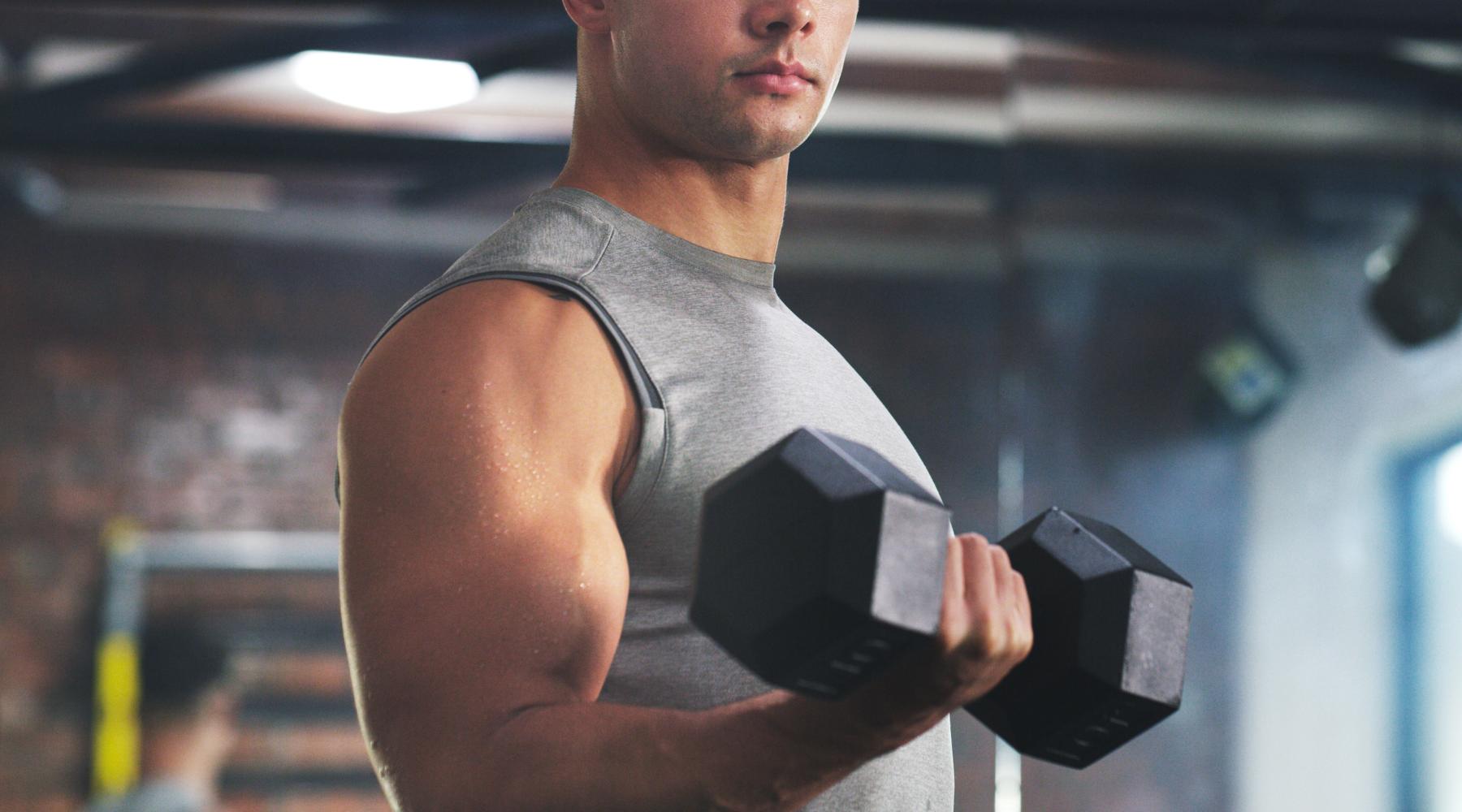HIIT, in its essence, is a workout regimen that consists of short bursts of intense, heart-pounding exercises followed by brief periods of rest or lower-intensity exercises. A typical HIIT session normally lasts 30 minutes, making it a time-saver when it comes to busy schedules and trying to get the most results in the shortest amount of time.
However, it’s believed that there’s little difference in excess post-exercise energy consumption between Steady-State Training (SST) and HIIT, and virtually no difference in visceral fat loss between those performing HIIT and SST. This shows that there are suitable alternatives to HIIT, without any of the drawbacks that come with pushing your body to its limits.
What Are the Benefits of HIIT?
1. Efficient Calorie Burn: HIIT has shown its prowess in burning calories efficiently, making it a time-effective option for those with busy schedules. Studies indicate that it can burn more calories in less time compared to traditional, steady-state workouts such as jogging. For those grappling with time constraints, HIIT can be a game-changer.
2. Cardiovascular Improvement: HIIT is renowned for boosting cardiovascular health. It helps elevate your heart rate rapidly, mimicking the benefits of moderate-intensity continuous exercise in significantly less time. Improved cardiovascular health can enhance overall endurance and well-being.
3. Weight Loss: If weight loss is your goal, HIIT might be your new best friend. It not only torches calories during the workout but also leads to a post-exercise calorie burn. This "afterburn effect" can promote fat loss while preserving muscle mass.
4. Blood Pressure Regulation: Research has demonstrated that HIIT can contribute to reducing resting blood pressure. For those aiming to maintain or improve their blood pressure levels, HIIT could be a promising addition to their fitness routine.
5. Enhanced Fitness Metrics: HIIT is a potent tool for enhancing various fitness metrics like VO2 max, a key indicator of aerobic capacity. Regular HIIT sessions can lead to significant improvements in this crucial fitness parameter.
What Are the Drawbacks of HIIT?
Overtraining or overdoing any type of exercise can damage your body. With HIIT it's essential to be cautious, especially since recent studies have shown that performing too much high-intensity exercise may undo your progress and take away all the benefits you were after by practicing HIIT in the first place.

- Cortisol Spikes: HIIT is indeed intense, and this intensity can lead to elevated cortisol levels in the body. Cortisol is the primary stress hormone, and excessive or prolonged increases can result in digestive issues, bloating, and even weight gain. Moreover, persistently high cortisol levels can lead to anxiety and stress outside of workouts.
- Glycogen Depletion: During HIIT, your body primarily uses glycogen, stored carbohydrates in your muscles and liver, for quick energy. Without adequate rest between sessions, glycogen stores might not have sufficient time to replenish. This can leave you feeling sluggish and affect your exercise recovery.
- Sleep Disruptions: HIIT can improve sleep quality for some, but it can be counterproductive if performed too close to bedtime. The adrenaline surge can make it challenging to wind down, leading to sleep disturbances. For individuals who already struggle with sleep, timing HIIT appropriately is crucial.
- Metabolism Disruption: Surprisingly, excessive high-intensity exercise can disrupt metabolism. Pushing HIIT to the extreme can result in mitochondrial impairment, disturbances in blood sugar levels, and insulin production issues. Thus, moderation is key.
- Joint Strain: Form is critical in HIIT, and improper form can strain joints, particularly during explosive, high-impact movements like box jumps or burpees. Individuals with sensitive joints or conditions like arthritis should take extra care when engaging in HIIT.
-
Demotivation and Burnout: Overdoing HIIT can lead to burnout and demotivation. When workouts become grueling and unpleasant, it's challenging to maintain a consistent exercise routine. Remember, consistency is key to long-term fitness success.
How to Get the Most Out of HIIT
Now that you're acquainted with both the merits and potential pitfalls of HIIT, let's delve into strategies to maximize its benefits while mitigating its drawbacks:
-
Balanced Hormone Levels: Optimal cortisol balance is crucial. Incorporate rest and downtime between HIIT sessions to prevent excessive cortisol spikes. A balanced approach is the key to long-term success.
-
Glycogen Management: Prioritize post-HIIT recovery. Allow your body sufficient time to replenish glycogen stores with a proper combination of carbohydrates and rest. This will aid in maintaining energy levels and promoting recovery.
-
Sleep Hygiene: Mind your sleep patterns. Avoid late-night HIIT sessions if they disrupt your sleep. Ensuring a proper sleep routine is vital for recovery and overall well-being.
(3DActive Muscle Roller Stick for post-workout massage and recovery.)
-
Variety and Moderation: Balance HIIT with other exercise types. Incorporate strength training, low-intensity aerobic workouts, yoga, or outdoor activities into your routine. This diversification prevents overuse injuries and keeps your workouts engaging.
-
Listen to Your Body: Pay attention to your body's signals. If HIIT consistently feels grueling or causes excessive fatigue, it might be time to reassess your approach. It's crucial to choose workouts that align with your preferences and capabilities.
-
Frequency and Duration: Follow expert advice on HIIT frequency. Limit high-intensity workouts to two to three times a week, with adequate rest days in between. HIIT sessions should typically last no more than 30 minutes, accounting for warm-up and cool-down periods.
HIIT Alternatives
HIIT might not be suitable for everyone, especially beginners or people with preexisting health conditions. Fortunately, there are alternative workouts that can offer similar benefits without many drawbacks:
Low-Intensity Steady State (LISS)
LISS workouts involve gentle, steady activities like walking or leisurely cycling for extended periods. Aim for 20 to 30 minutes, three days a week. LISS can be an excellent choice for beginners or those with joint issues.
Strength Training
Resistance or strength training can be more effective than aimless HIIT workouts. Multi-joint movements like bench presses, rows, and squats are calorie-burning powerhouses. Building muscle through strength training can boost metabolism and help burn fat.
Read more: Do Resistance Bands Build Muscle?
Moderate-Intensity Steady-State Training (SST)
Moderate-intensity workouts, performed at 70% to 90% of your maximum effort, offer a more sustainable alternative. These workouts can include treadmill or row machine sessions and bodyweight exercises like mountain climbers. They provide efficient calorie burning without the extreme intensity of HIIT.
HIIT vs. Cardio: Which is Better for Weight Loss?
If weight loss is your primary goal, you might be wondering whether HIIT or traditional cardio workouts are more effective.
HIIT for Weight Loss:
- HIIT can efficiently burn calories during and after workouts.
- The afterburn effect can lead to fat loss while preserving muscle mass.
- It offers time efficiency for those with busy schedules.
- Improved cardiovascular health can enhance overall fitness.
Traditional Cardio for Weight Loss:
- Cardio workouts are effective for steady calorie burning during the workout.
- They are ideal for individuals transitioning from a sedentary lifestyle to a more active one.
- Cardio enhances heart and lung health.
- Long-duration cardio can help build endurance.
Both HIIT and cardio have their merits. The choice depends on your fitness level, preferences, and lifestyle. Combining both can be a well-rounded approach to your fitness.
Read more: Walking vs Running: Choose the Best Exercise
Is HIIT Right For You?
Ultimately, the best workout regimen is one that aligns with your goals, preferences, and lifestyle. There's no one-size-fits-all answer when it comes to fitness. If HIIT resonates with you and you're committed to its intensity, it can be a transformative fitness tool. However, it's vital to approach it sensibly and avoid overexertion.
Remember, exercise should enhance your life, not become a source of stress or burnout. Listen to your body, adapt your routine as needed, and explore alternatives when HIIT doesn't feel right.
To achieve sustainable fitness, consider the bigger picture. Exercise is just one facet of a healthy lifestyle, complemented by a balanced diet, rest, and personal well-being. The key is to find joy in movement, whether it's through HIIT, steady-state cardio, strength training, or other enjoyable activities.
HIIT can be a powerful fitness tool, but it's not the sole path to well-being. Make an informed choice, prioritize your health, and remember that consistency and balance are the keys to long-term fitness success.
Read more: How to Start Calisthenics: Your Guide to Bodyweight Fitness
Disclaimer: The information provided in this article is for educational and informational purposes only and should not be considered medical or health advice. Always consult with a healthcare professional or fitness expert before starting a new exercise program or making significant changes to your fitness routine.




